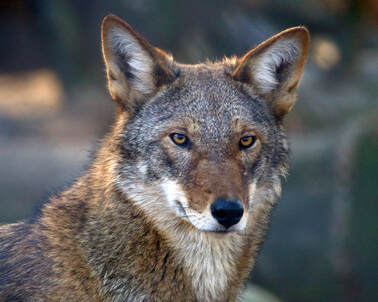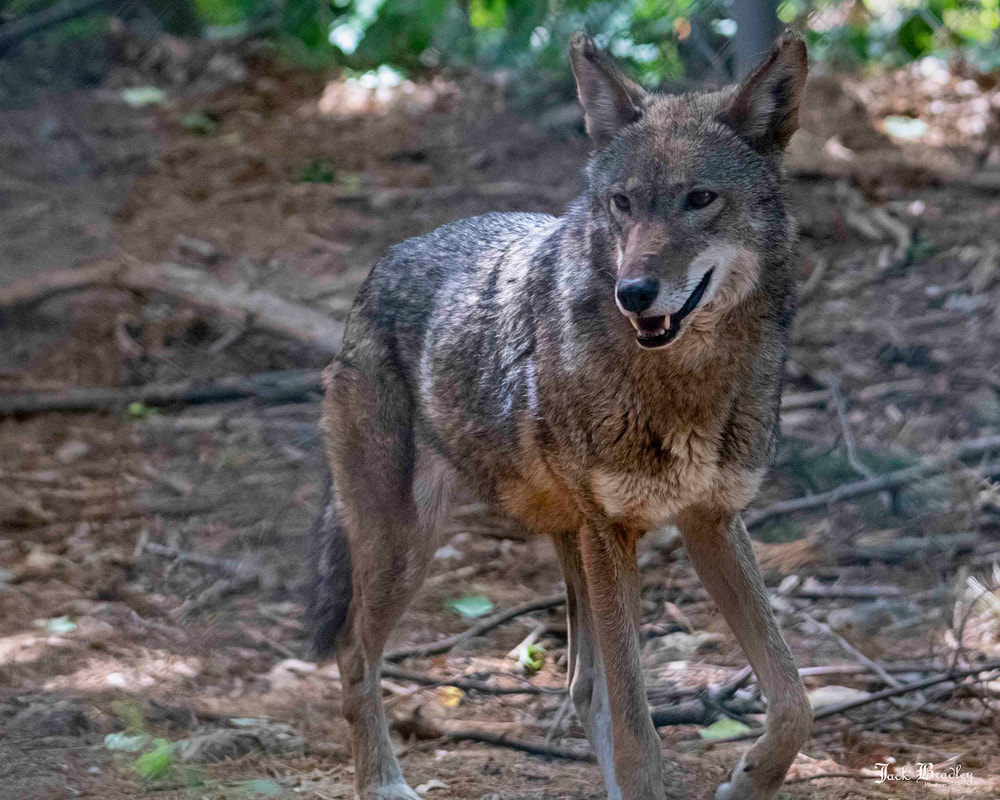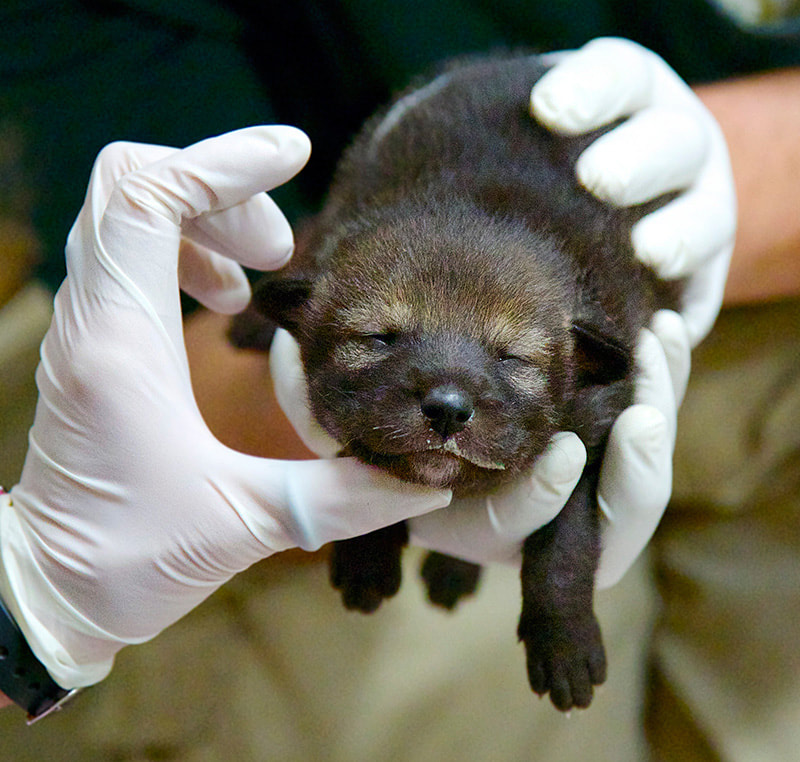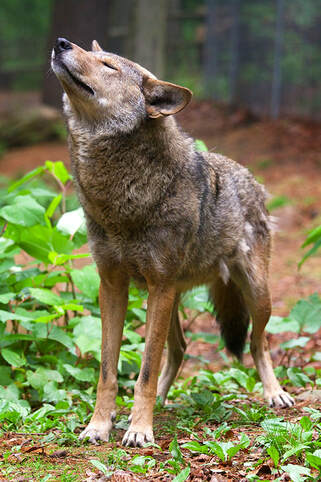Red Wolf (Canis rufus)Physical Description: Red Wolves are brown and buff colored with some black along their backs and tail. They have a red tint on their ears, head and legs. It is smaller than the Gray Wolf, at 26 inches tall and 4 feet long on average. They weigh 45 to 85 pounds on average.
Red Wolves have a broad head and muzzle, pointed ears, and long slender legs built for distance and speed. They have been known to travel up to 20 miles a day for food. They can reach speeds of up to 30 mph in short bursts when chasing prey. Red Wolves have been known to interbreed with Coyotes, which can share characteristics between the two species. Habitat: The Red Wolf lives in a variety of habitats including dense mountains, bottomland forests, marshes, swamps, and coastal prairies. Range: Although they were once found from central Texas to southern Pennsylvania to Florida, today the only place Red wolves can be found in the wild is in eastern North Carolina's Albemarle Peninsula. Diet: Red Wolves are generally solitary hunters of raccoons, and other small mammals like rabbits and mice. If hunting as a team they can bring down white-tailed deer or even cattle. They can eat up to five pounds of food a day. Lifespan: The average life span is 7 years in the wild and up to 15 years in human care. Social Structure: Red Wolves mate for life, and these pairs usually mate once a year, in February. Pups are usually born in April or May and concealed in well-hidden dens. Red Wolves form close-knit packs and are highly social. These packs, which usually consist of a breeding pair and their offspring of various years, contain between five and eight individuals. The pack is a very close family unit. Older offspring will help the breeding male and female raise their younger siblings. Within one to three years, the younger wolves will leave the pack in search of their own mates and territory. Status: Critically Endangered1 Other: Red wolves were brought to the brink of extinction in the wild due to hunting, trapping, poisoning and extreme competition with coyotes. With the help of zoos and the American Zoo and Aquarium Association’s Species Survival Plan (SSP), wild Red wolves were captured and bred in zoos. In 1987 a reintroduction program was started in North Carolina. Connecticut’s Beardsley Zoo contributed eight wolf pups, bred right here in Bridgeport, to this reintroduction program. Red Wolves and Coyotes are very closely related and share a recent common ancestor. The two species do hybridize and produce fertile offspring. It is usually impossible to distinguish between a Coyote – Red Wolf hybrid and a Red Wolf just by looking at it. Wildlife Biologists that work with the only known wild population of Red Wolves at Alligator River National Wildlife Refuge in North Carolina perform DNA tests to be sure. Red Wolves are a critically endangered species with only about 30 individuals existing in the wild in the world, all of them in the Alligator River National Wildlife Refuge area of North Carolina. Coyotes, although not found East of the Mississippi River prior to 1900, are now very common throughout the eastern United States. The fate of Canis rufus has seesawed over the years from extinction to restoration; an unexpected genetic find may have tipped the balance in restoration's favor. Click to read the Zoo's Curator of Education Jim Knox's recent article for Natural History Magazine. 1 https://www.iucnredlist.org/species/3747/163509841 |
Connecticut’s Beardsley Zoo is dedicated to acquainting a diverse public to the delicate balance that exists between living things and their environment.
Connecticut's Beardsley Zoo is a 501(c)(3) not for profit owned and operated by the Connecticut Zoological Society.
Connecticut's Beardsley Zoo is a 501(c)(3) not for profit owned and operated by the Connecticut Zoological Society.
© 2022 Connecticut's Beardsley Zoo










